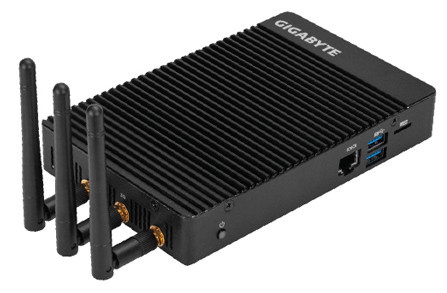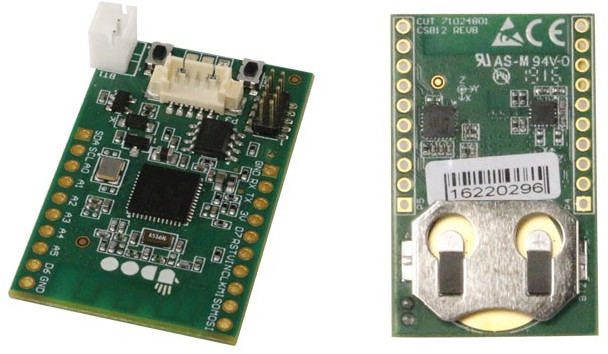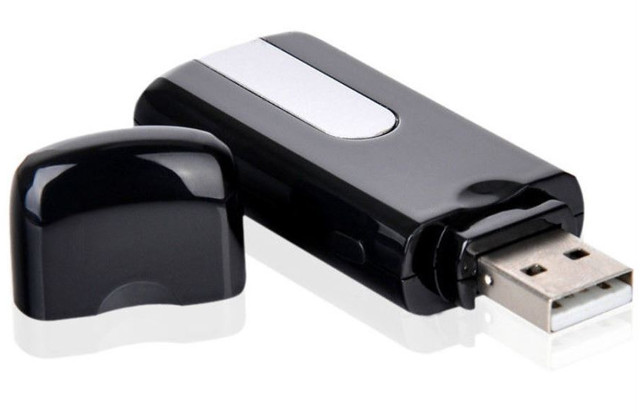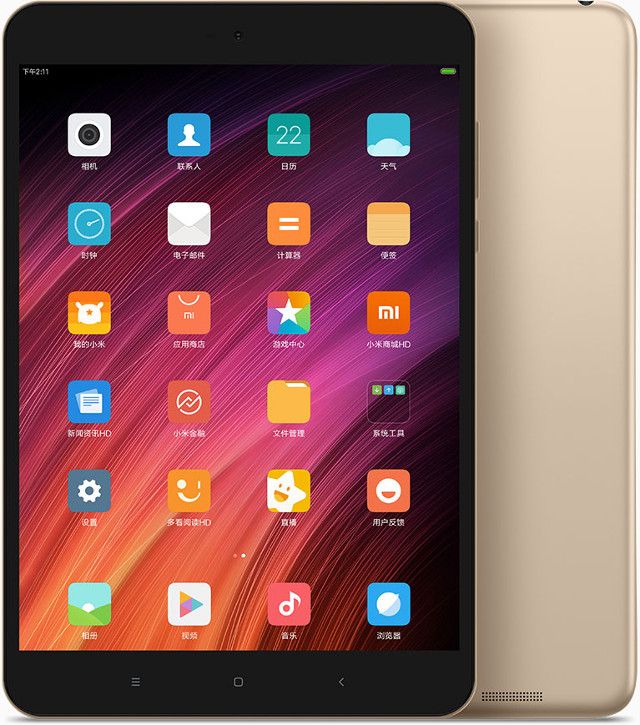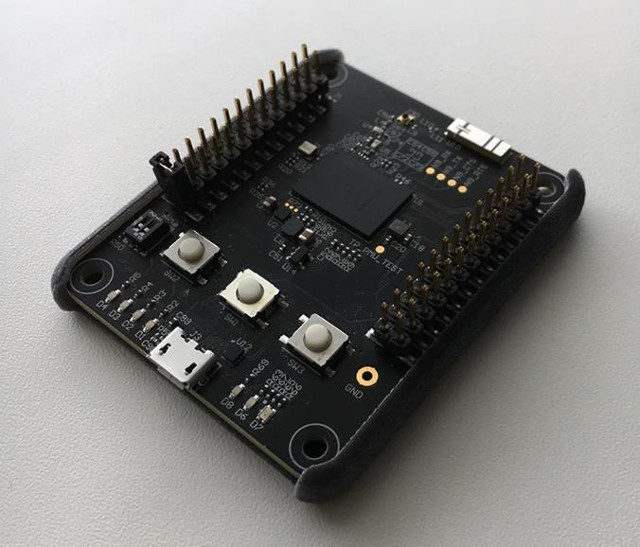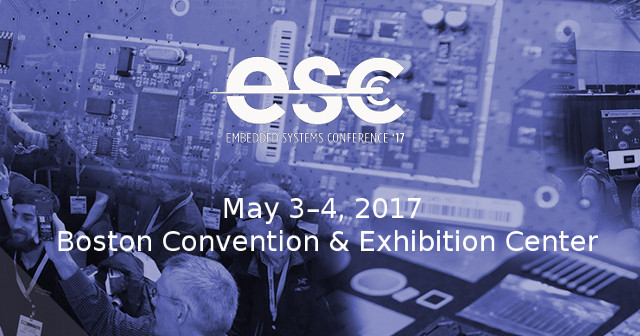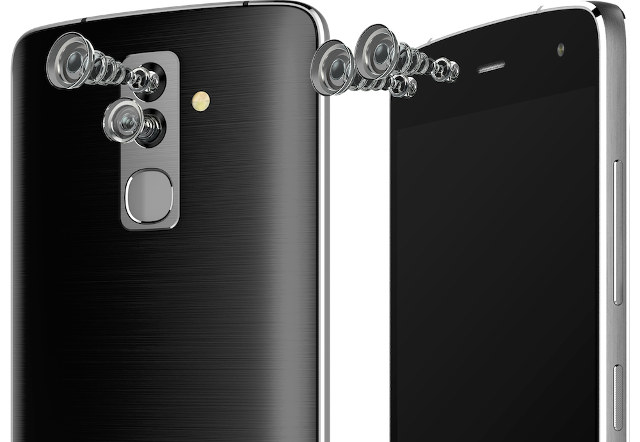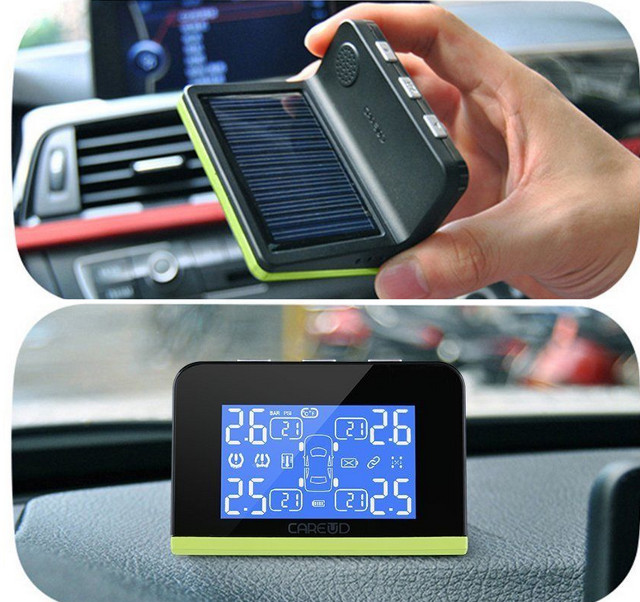GIGABYTE has unveiled BRIX IoT mini PC powered by either Intel Celeron N3450 or Pentium N4200 processor both part of Intel’s Apollo Lake family, and as the name implied the devices target Internet of Things applications. GIGABYTE BRIX IoT specifications: SoC (one or the other) Intel Celeron N3450 quad core processor @ up to 2.2GHz with Intel HD graphics 500 (6W TDP) Intel Pentium N4200 quad core processor @ up to 2.5GHz with Intel HD graphics 505 (6W TDP) System Memory – 2x SO-DIMM DDR3L slots @ 1333/1600/1866 MHz up to 8GB Storage – 1x M.2 slot, 1x micro SD slot, optional 32 or 64GB eMMC flash Connectivity Dual Gigabit Ethernet via Realtek RTL8111HS Intel Dual band Wireless-AC 3165 module with two SMA antenna connectors 3G via mini PCIe slot and SIM card slot with one SMA antenna connector Video Output – Dual HDMI 1.4b up to 3840×2160 @ 30 […]
UDOO BLU and BLU SENSE IoT Modules Integrate Bluetooth LE, Zigbee, and 6LOWPAN Connectivity
UDOO is known for their Linux boards based on NXP and Intel processors for makers and the education market such as UDOO NEO or UDOO x86, but the company has now developed UDOO BLU and BLU SENSE battery powered modules based on Texas Instruments CC2650 ARM Cortex M3 microcontroller, both with Bluetooth LE, Zigbee, and 6LOWPAN connectivity, and the SENSE model adds some extra sensors. UDOO BLU and BLU SENSE specifications: Wireless MCU – Texas Instruments CC2650 ARM Cortex M3 MCU @ 48 MHz with 128KB flash, 8KB SRAM with 2.4 GHz radio Connectivity – Bluetooth Low Energy (BLE), ZigBee, 6LoWPAN Sensors (BLU SENSE only) – NXP FX0S8700CQ accelerometer & magnetometer sensor, NXP FXAS21002C gyroscope & temperature sensor Expansion 1x 5-pin sensors Snap-In I2C connector for UDOO Bricks 2x 10-pin headers with 8x Digital GPIOs, 6x ADCs, 1x I2C, 1x SPI, 1x UART Misc – 3x User Configurable LEDs (Red, […]
That USB Stick Looks Suspicious! Camera, Microphone and Battery Included.
I had previously read about USB flash drives dropped on the parking with some malware, so that if you pick it up and use it it infects your computer in order to spy on your activity. But I browser new arrivals on DealExtreme, I found another nefarious use case thanks to U8 Mini USB drive / spy camera sold for around $10 shipped. If we look the picture below, it looks just like any other USB flash drives.But once we have a closer look at U8 mini specifications: USB – 1x USB 2.0 male port Storage – micro SD slot up to 32GB (no internal storage) Camera Video up to 720 x 480 @ 25~30fps recording to AVI/M-JPEG Photo up to 1280×1024 in JPG format Audio recording with built-in microphone Misc – Motion detection camera button, power button, picture button, status LED Battery – 300 mAh good for about 60 […]
Xiaomi Mi Pad 3 Tablet Launched with Mediatek MT8176 Hexa-Core Processor, 7.9″ Display
Xiaomi Mi Pad 2 was powered by an Intel Cherry Trail, but the Chinese company has decided to go back to ARM for the third iteration of their MiPad tablet as they used Mediatek MT8719 hexa-core Cortex A72/A52 processor with 4GB RAM, 64GB flash, and the same 7.9″ display with 2048 x 1536 resolution. Xiaomi Mi Pad 3 specifications: SoC – Mediatek MT8176 hexa-core processor with 2x ARM Cortex A72 cores @ 2.1 GHz, 4x ARM Cortex A53 cores @ 1.7 GHz, and Imagination PowerVR GX6250 GPU System Memory – 4GB LPDDR3 Storage – 64GB eMMC flash, no micro SD slot Display – 7.9″ capacitive touch screen IPS LCD display with 2048 x 1536 resolution Audio – 3.5mm headphone jack, Connectivity – Dual band 802.11 b/g/n/ac WiFi, Bluetooth 4.2 LE Camera – 5MP front-facing camera, 13 MP rear camera with auto-focus, dual LED flash USB – 1x USB type C […]
Microsoft is Working with Mediatek on Project Sopris Secure WiFi MCU
There are serious security issues with the Internet of Things at all levels: hardware, software, network, and end-users. Microsoft Research NExT Operating Systems Technologies Group has been tasked with “exploring the goal of securing the vast number of low cost Internet connected devices coming online” with Project Sopris. They have shared their first technical report that identifies “seven properties of highly secure devices”, and describes their experiments towards designing microcontroller based prototype devices adapted from Mediatek MT7687 MIPS microcontroller, and exhibiting those seven properties. The seven properties identifies by Microsoft team include: Hardware-based Root of Trust – Unforgeable cryptographic keys generated and protected by hardware. Physical countermeasures resist side-channel attacks. Small Trusted Computing Base – Private keys stored in a hardware-protected vault, inaccessible to software. Division of software into self-protecting layers. Defense in Depth – Multiple mitigations applied against each threat. Countermeasures mitigate the consequences of a successful attack on […]
Embedded Systems Conference 2017 Schedule – May 3-4
The Embedded Systems Conference 2017 will take place over two days in Boston, US on May 3-4, and the organizers have published the schedule of the event. Even if you’re not going to attend, you’ll often learn something or find new information by just checking out the talks and abstracts, so I’ve created my own virtual schedule with some of the most interesting sessions. Wednesday, May 3rd 08:00 – 08:45 – Combining OpenCV and High Level Synthesis to Accelerate your FPGA / SoC EV Application by Adam Taylor, Adiuvo Engineering & Training Ltd This session will demonstrate how you can combine commonly used Open source frameworks such as OpenCV with High Level Synthesis to generate a embedded vision system using FPGA / SoC. The combination of OpenCV and HLS allows for a much faster algorithm development time and consequently a faster time to market for the end application. 09:00 – 09:45 […]
Alcatel Flash Android Smartphone Comes with 4 Cameras (Dual front, Dual rear Cameras)
In recent years, we’ve seen smartphones with dual camera systems most of the time placed on the rear side of the phone, but Alcatel Flash smartphone features both a dual front-facing camera for better selfies, and a dual rear camera, both coming with one color and one monochrome sensors. Alcatel Flash specifications: SoC – Mediatek Helipo X20 (MT6797) deca-core processor with 2x Cortex-A72 @ 2.3 GHz, 4x Cortex-A53 @ 1.9 GHz, 4x Cortex-A53 @ 1.4 GHz System Memory – 3GB RAM Storage – 32GB flash, micro SD slot up to 128 GB Display – 5.5” IPS display; 1920×1080 resolution; Dragontrail Glass; fingerprint-resistant Oleophobic coating Cellular Connectivity GPRS/EDGE – 850/900/1800/1900 MHz UMTS/HSPA+/DC-HSDPA – 850/900/1900/2100 MHz 34/39 band LTE – FDD: B1/3/5/7/8/20; TDD: 38/39/40/41 Dual Nano SIM Dual Standby Wireless Connectivity – Wi-Fi 802.11/b/g/n, Bluetooth 4.1, FM radio, GPS with A-GPS/Glonass/Beidou Cameras Dual rear cameras Dual 13MP Mono+RGB, Sony IMX258 1/3.06 sensor […]
Solar Powered CAREUD U800WF Monitoring System Checks Your Car’s Tires Pressure
Every few months, we inflate (or deflate) our car tires at the gas station to match the pressures for front and rear tires given by the manufacturer. But if you want to make sure the pressures are always at their optimal levels, or close to it CAREUD U800WF pressure monitoring system might be a useful little gadget. The monitor that you can place on your dashboard comes with the following specifications: Display showing pressure with +/- 1.5 PSI accuracy and temperature with +/- 3 °C accuracy for all four tires; data updated every 3 seconds. Connectivity – 433.92 MHz RF Power Supply Solar Panel 5V via micro USB port 900 mAh Li-ion Battery Temperature Range – Storage: -30 to 85 °C; operating: -20 to 80 °C IP Rating – IP5K4K (The “K” in the ingress protection rating means it complies with ISO 20653:2013 Road Vehicles-Degrees of protection) Dimensions – 76 […]


